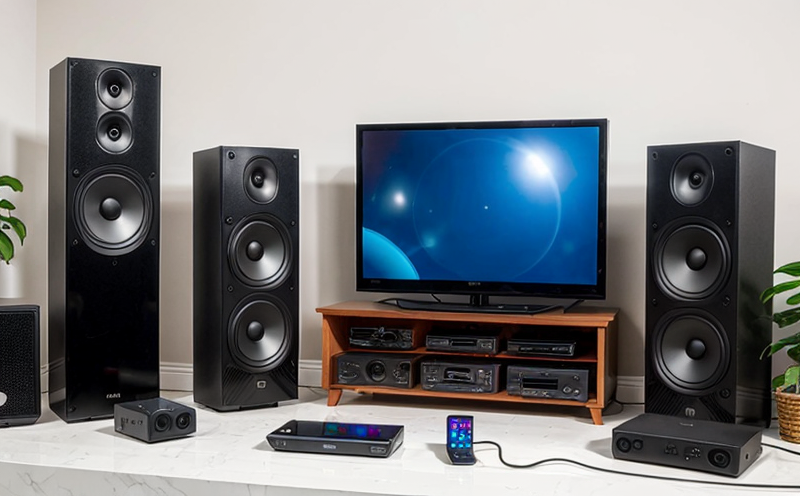ISO 7779 Acoustic Noise Testing for Consumer Equipment
The International Organization for Standardization (ISO) standard ISO 7779 outlines procedures and criteria for measuring the acoustic noise emitted by consumer electronic devices. This testing is crucial in ensuring that products meet stringent sound quality standards, thereby enhancing user experience and satisfaction.
Acoustic noise testing plays a vital role in product development and compliance with international regulations. By adhering to ISO 7779 guidelines, manufacturers can minimize unwanted sounds such as hums, clicks, and buzzes, which are often perceived negatively by consumers. This is particularly important for consumer electronics where sound quality directly impacts the overall user experience.
The testing process involves several critical steps that ensure accurate measurement of noise levels in various environments. Preparing the specimen includes calibrating equipment to known standards and ensuring the test environment meets specified conditions. During the test, technicians measure sound pressure levels using specialized microphones placed at specific distances from the device under test.
Once data is collected, it undergoes rigorous analysis to determine compliance with ISO 7779 specifications. Compliance ensures that the product does not exceed allowable noise limits and can be safely used in various settings without causing discomfort or annoyance to users. This testing process is essential for brands aiming to meet global market requirements.
Understanding the implications of ISO 7779 compliance helps quality managers, R&D engineers, and procurement officers make informed decisions about product design and material selection. By prioritizing acoustic noise reduction early in the development cycle, manufacturers can ensure their products are not only functional but also enjoy positive consumer reception.
To achieve successful outcomes from this testing service, it is important to engage with experienced laboratories that specialize in ISO 7779 compliance. These labs provide comprehensive support throughout the process, from initial consultation on specimen preparation to detailed reporting and certification.
Why Choose This Test
- Ensures compliance with international standards that enhance consumer satisfaction.
- Reduces risk of product recall due to noise complaints.
- Promotes better user experience by minimizing unwanted sounds.
- Aids in meeting global market requirements for sound quality.
International Acceptance and Recognition
- ISO 7779 is widely accepted across Europe, Asia, and North America.
- The standard is recognized by major regulatory bodies around the world, ensuring consistent standards globally.
By adhering to ISO 7779 acoustic noise testing protocols, manufacturers can confidently enter diverse markets without encountering compliance issues. This global acceptance simplifies international trade and ensures a high level of sound quality across all regions.
Environmental and Sustainability Contributions
Incorporating ISO 7779 acoustic noise testing into the product development process supports sustainability goals by reducing environmental impact through improved design. Lowering noise levels not only enhances user experience but also contributes to a quieter environment, which is beneficial for both users and the planet.
Additionally, this service aligns with broader sustainability initiatives aimed at reducing waste and energy consumption in production processes. By ensuring early compliance with stringent standards, manufacturers can minimize resource usage throughout the product lifecycle.





